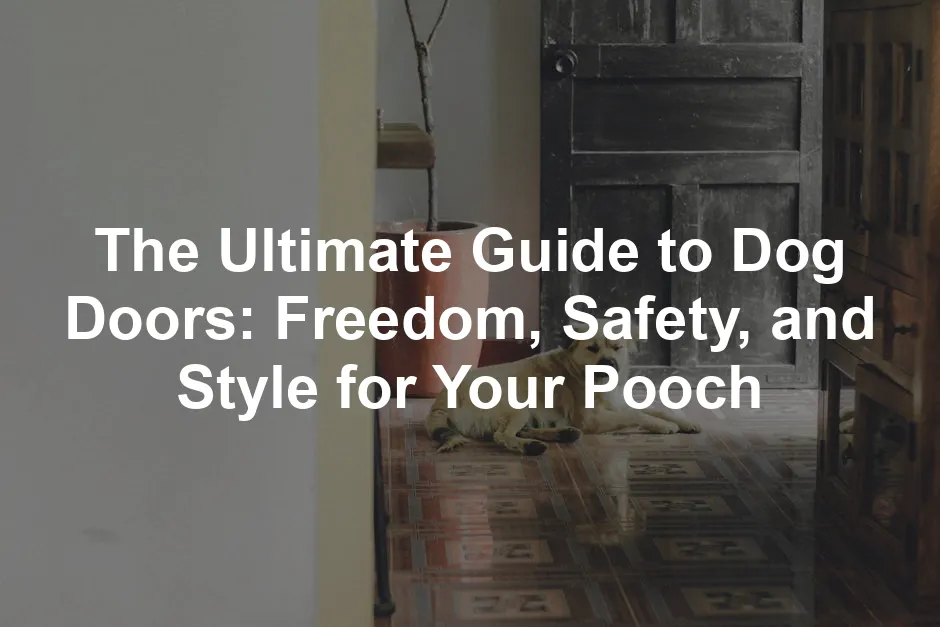Introduction
Dog doors are not just a simple convenience; they are a gateway to freedom for your furry friend and peace of mind for you. Imagine your canine companion, with the wind in their fur, dashing in and out of the house at their whim—no more waiting by the door or cute puppy eyes pleading for a bathroom break. However, the choice of a dog door is not as straightforward as it may seem. From size and type to installation and security features, there’s a lot to consider to ensure you make the best choice for your home and your pet. In this guide, we’ll unlock the secrets of the dog door world. Whether you have a tiny Yorkshire Terrier or a massive Great Dane, we’ll explore everything you need to know to select and install the perfect dog door. So, grab a cup of coffee, sit back, and let’s dig into the details! Choosing the right dog door can feel like picking the perfect pair of shoes. It’s all about fit, function, and style. A poorly chosen door may lead to frustration for both you and your pooch. Will your dog figure out how to use it? Is it secure enough to keep unwanted guests out? These questions are crucial!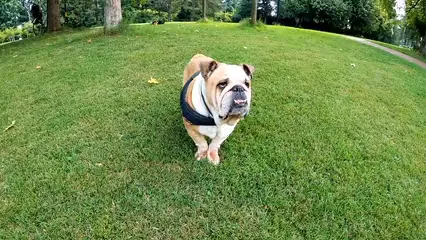
If you’re looking for a high-tech solution, consider the PetSafe Electronic SmartDoor. This door uses a smart collar to allow only your dog to enter and exit, keeping those pesky raccoons out. It’s like having your own personal bouncer for your home!
We’ll discuss various types of dog doors, from simple flaps to high-tech electronic models. Each option has its benefits and drawbacks. Think of it as a buffet of choices—choose wisely! Plus, we’ll guide you on measuring your pet correctly. After all, you wouldn’t buy shoes without knowing your size, right? We’ll also cover installation tips to make the process as smooth as a pup’s fur. With the right knowledge, you can enhance your pet’s freedom while keeping your home safe. So, let’s embark on this informative journey together. Your furry friend is counting on you to make the best choice!Types of Dog Doors
Choosing the right dog door is crucial for your pup’s freedom and your home’s security. Let’s break down the different types of dog doors available, each with its unique features.Manual Dog Doors
Manual dog doors are the classic option. These basic flap doors let your dog come and go as they please. They don’t require any power, making them simple and easy to install. Just think of them as the “swinging saloon doors” of the pet world! Pros:- Affordability: They won’t break the bank. You can find a solid model for a reasonable price.
- Simplicity: No complicated technology here! Just a flap your pooch can push through.
- Security: They lack advanced locking features. If you live in a neighborhood with curious raccoons or nosy neighbors, this might be a concern.
- Weather Resistance: Depending on the model, manual doors may not seal tightly, allowing drafts or pests to sneak in.

Electronic Dog Doors
If you crave convenience and security, electronic dog doors are the way to go. These high-tech doors open via an electronic collar that your dog wears. When they approach, the door unlocks—like magic! Security Features:- Selective Access: Only your dog can open the door. This feature keeps unwanted critters at bay.
- Programmable Options: Some models allow you to set specific access times. Perfect for keeping your pup in when dinner is served!
If you want to ensure your pet’s safety and comfort, the Ideal Pet Products Ruff-Weather Pet Door is a great choice. This door is designed for extreme weather conditions, ensuring your furry friend stays comfortable no matter the season.
Potential Issues:- Power Dependence: These doors need batteries or electrical power. If the power goes out, your pup might get stuck inside. Yikes!
- Initial Cost: While they offer great features, the price can be steeper than manual options.
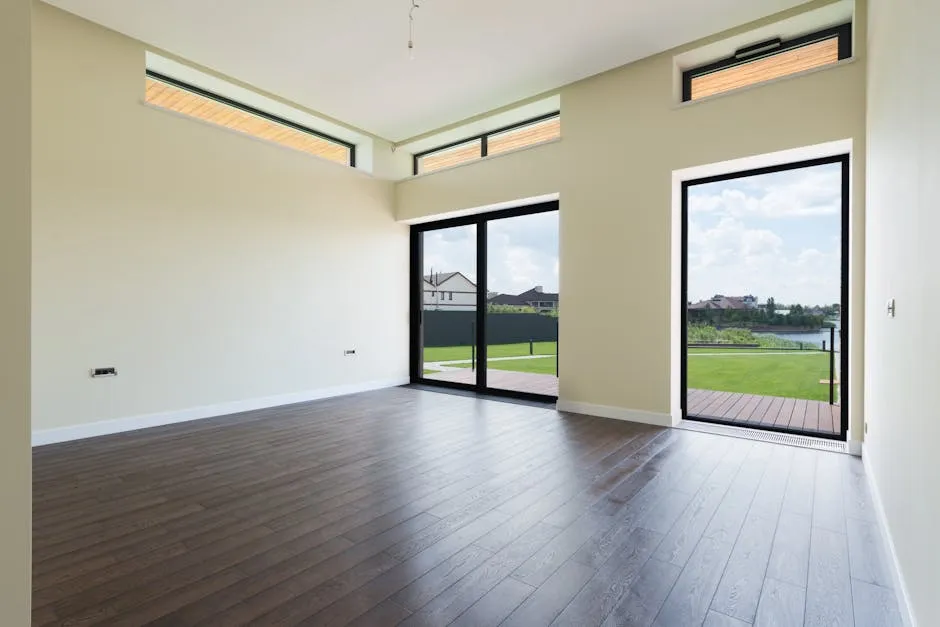
Sliding Glass Dog Doors
For those with sliding glass doors, a sliding glass dog door is a game-changer! These doors fit neatly into the track of your sliding door, allowing easy access for your pup without sacrificing style. Installation Tips:- Measure Carefully: Ensure you get the right size to avoid gaps or misfits.
- Follow Instructions: Most come with easy-to-follow installation guides. You’ll be a DIY pro in no time!

Consider adding a PetSafe Freedom Aluminum Dog Door for durability and style. This door is perfect for homes with sliding glass doors, allowing your pet to come and go freely while maintaining your home’s aesthetics.
Custom Dog Doors
If your pup has unique needs or you want a door that fits a peculiar space, custom dog doors are your best bet. These are tailored to your specifications, ensuring a perfect fit. Use Cases:- Large or Unusual Breeds: If you have a Great Dane or a tiny Chihuahua, standard sizes might not cut it. Custom doors are the solution!
- Specific Locations: For those tricky spots around your home, a custom door can be created to fit just right, making it a breeze for your pet to come and go.

Installation Tips
DIY Installation
Installing a dog door can be a fun project! With the right tools and a bit of patience, you can do it yourself. Here’s a step-by-step guide to help you through the process.- Choose the Right Spot: Select a location that is convenient for your dog. Consider the height and width of your pet.
- Measure Your Dog: Measure your pup’s height and width. This will help you choose the right size door.
- Gather Tools: Essential tools for installation include:
- A pencil
- Measuring tape
- A level
- A saw (jigsaw or reciprocating saw)
- Screwdriver
- Drill
- Safety goggles
- Sandpaper
- Mark the Outline: Use your measurements to mark the outline of the door on the wall or door where you plan to install it.
- Cut the Opening: Carefully cut out the marked area using your saw. Make sure to wear your safety goggles!
- Install the Frame: Place the frame of the dog door into the opening. Use a level to ensure it’s straight.
- Secure It: Follow the manufacturer’s instructions to secure the door frame in place with screws.
- Test the Door: Once installed, encourage your dog to use the door. Reward them with treats for a successful first attempt!

For those who might need a little extra help, a dog door installation kit can make the process even smoother. These kits provide all the necessary tools and instructions to ensure a hassle-free installation.
By following these steps, you’ll have a functional dog door in no time, giving your furry friend the freedom they deserve.Professional Installation
While DIY installation can be rewarding, sometimes it’s best to call in the pros. Here are some scenarios where professional help is advisable:- Complex Installations: If your home has unusual materials or structures, a professional can navigate these challenges.
- Electrical Work: For electronic dog doors that require wiring, it’s safer to have an expert handle the installation.
- Time Constraints: If you’re short on time, hiring a professional can save you the hassle.
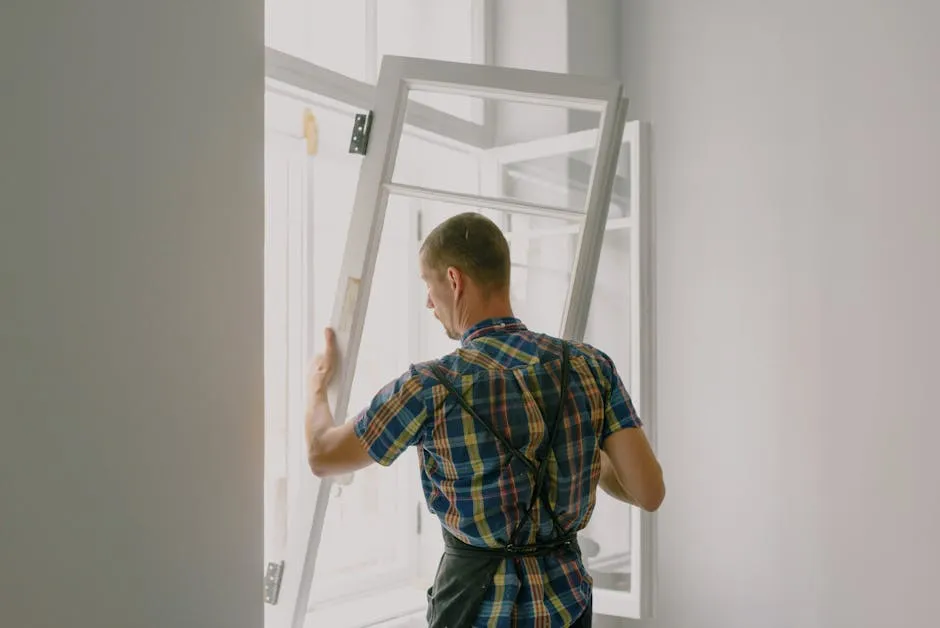
Security Features
Locking Mechanisms
When it comes to dog doors, security should be a top priority. Various locking mechanisms can enhance safety:- Manual Locks: Simple yet effective, these locks require you to manually secure the door. They work well for less frequent use.
- Magnetic Locks: These automatically lock when the door closes, preventing unauthorized access. Perfect for those curious raccoons!
- Electronic Locks: High-tech options that allow access through a collar key. Only your pet can unlock it. Talk about high security!
- Always lock your dog door when not in use.
- Regularly check the locking mechanism for wear and tear.
- Train your dog to use their door with supervision initially.
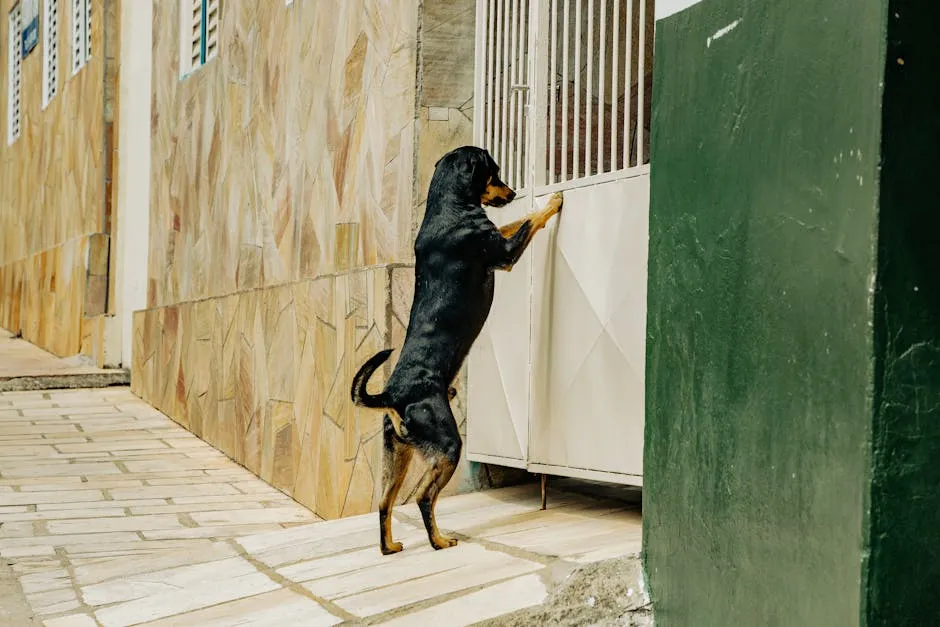
Smart Technology
Modern dog doors are getting a tech upgrade! Smart dog doors offer advanced features that make life easier. Overview: These doors can be controlled via smartphone apps. You can lock or unlock the door from anywhere. Some models even allow you to set schedules for when your pet can come and go.Enhance your pet’s experience with the PetSafe Smart Dog Door App. It allows you to monitor and control your dog’s access right from your phone, giving you peace of mind and flexibility.
Benefits:- Convenience: No more getting up to let your dog out! Control it right from your phone.
- Enhanced Security: Receive alerts if your dog uses the door unexpectedly. This feature adds an extra layer of peace of mind.
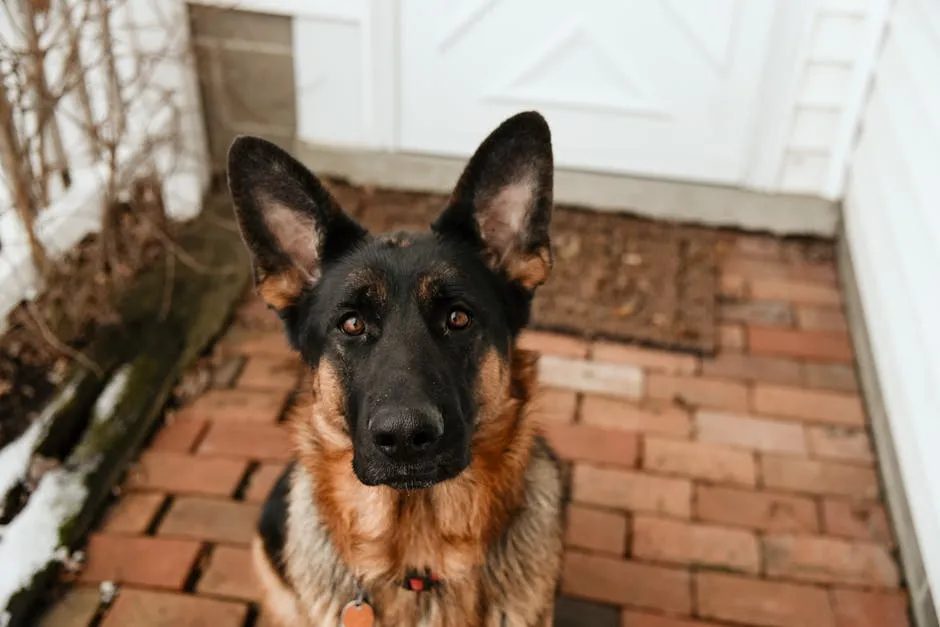
Maintenance and Care
Routine Checks
Keeping your dog door in tip-top shape isn’t just about looks. Regular inspections ensure it functions properly and securely. Here’s what to keep an eye on:- Flap Condition: Inspect the flap for tears or wear. A worn flap can let in drafts or unwanted critters.
- Hinges and Frame: Check that the hinges move smoothly. Any sticking can lead to frustration for your pup.
- Locking Mechanism: Test the locks to ensure they work correctly. A faulty lock is like leaving the front door open!
- Seals: Look for gaps between the door and the frame. Seals should be intact to keep out pests and weather.
- Electronics: For electronic doors, check battery levels regularly. You wouldn’t want your pup stuck outside because the door isn’t working!
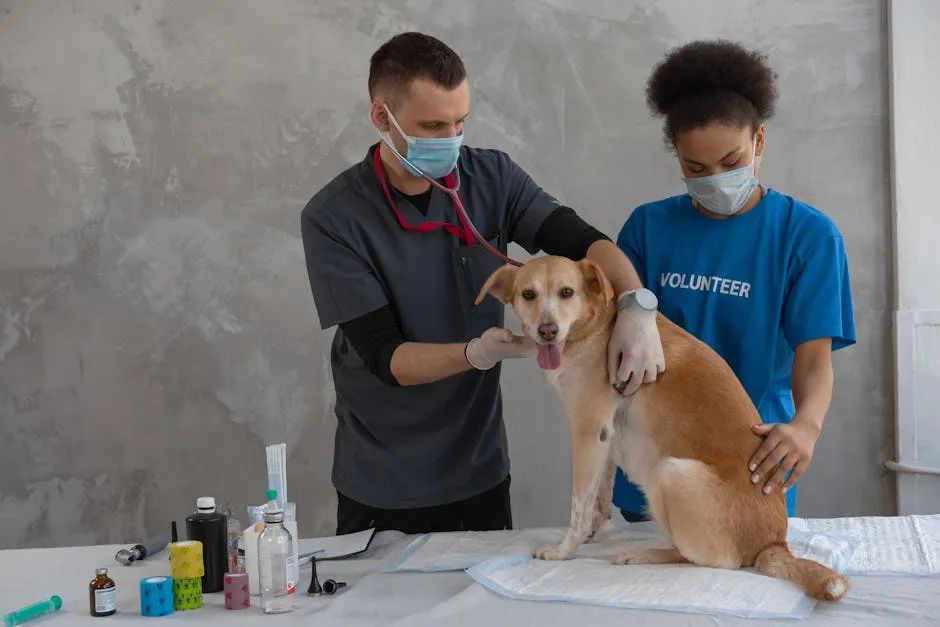
After all those checks, give your furry friend a comfortable place to rest with a BarksBar Orthopedic Dog Bed. It’s perfect for keeping your furry friend cozy after their outdoor adventures!
By performing these routine checks, you’ll catch problems early. This proactive approach extends the life of your dog door and keeps your pet safe.Cleaning Tips
A clean dog door is a happy dog door! Here are some simple steps to keep yours sparkling:- Routine Wipe Down: Use a damp cloth to wipe down the frame and flap weekly. This prevents dirt buildup and keeps the door looking fresh.
- Mild Cleaners: For stubborn stains, opt for mild soap and water. Avoid harsh chemicals that could harm your pet.
- Inspect for Debris: Check the surrounding area for debris that might get stuck in the door mechanism. A quick sweep can save you headaches later.
- Seasonal Deep Clean: Every few months, perform a deeper clean. Remove the flap if possible and clean both sides. This helps prevent odors and keeps everything functioning smoothly.
- Preventative Measures: Consider placing a mat outside the door. This reduces the amount of dirt your dog tracks in. A little prevention can go a long way!
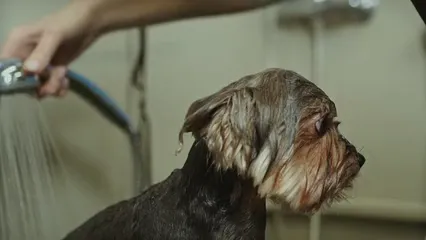
While you’re at it, keep your pet’s hygiene in check with Dog Shampoo and Conditioner. Regular grooming keeps your dog’s coat clean and shiny, making them even more adorable!
With these maintenance and cleaning tips, your dog door will stay functional and looking great. It’s a small investment in time for a big return in convenience and safety.Cost Considerations
Price Ranges
When it comes to dog doors, costs can vary widely. Here’s a quick breakdown:- Budget Options: Expect to pay around $15 to $50 for basic manual doors. They’re affordable, but may lack advanced features.
- Mid-Range Choices: Priced between $50 and $200, these include better materials and some electronic features. Great for those wanting a balance of cost and functionality!
- Premium Models: High-end dog doors can range from $200 to $600. These often offer smart technology and enhanced security features. Perfect for the tech-savvy pet owner!
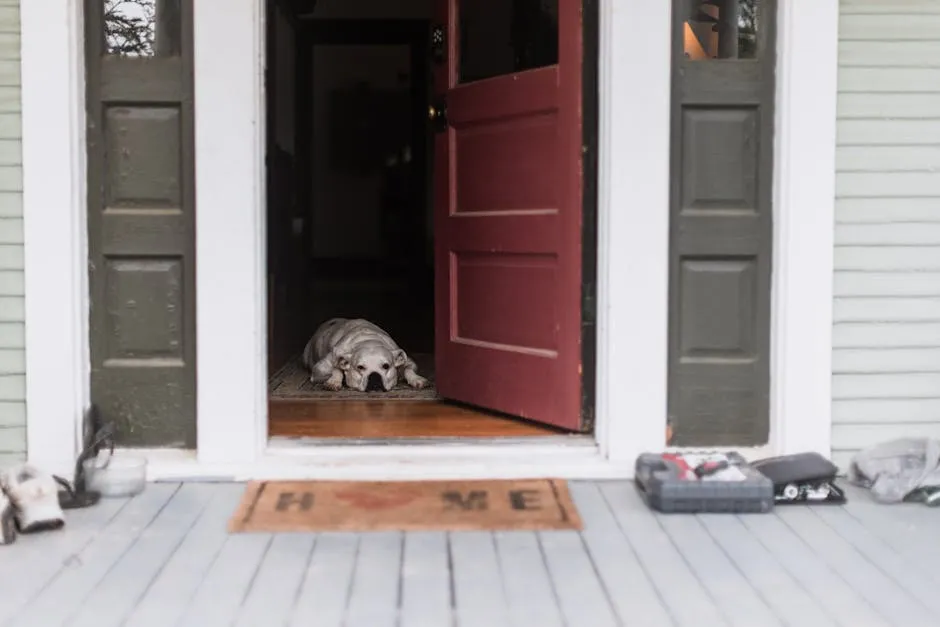
Speaking of premium, if you want to spoil your pup, check out the PetFusion Ultimate Dog Bed. It combines comfort and support for your pet, ensuring they have the best rest possible!
Factors Affecting Cost
Several factors influence the price of dog doors:- Materials: Plastic options are usually cheaper, while metal or insulated models cost more. Invest in durability!
- Features: Electronic doors come with advanced features that increase the price. Consider how much convenience is worth to you.
- Installation: If you’re hiring professionals, factor in installation costs. DIY can save money, but might require tools and time.
- Brand: Well-known brands may charge a premium, but they often offer better warranties and customer support. Think of it as an investment in quality.
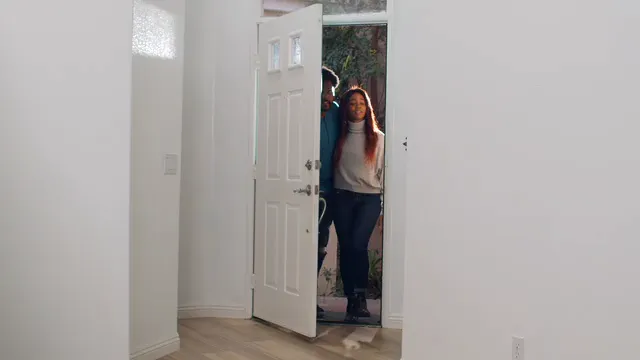
Conclusion
In conclusion, a dog door can be a game-changer for both you and your pet. It provides your dog with the freedom to explore their environment while offering you the convenience of not having to constantly let them outside. By understanding the different types of dog doors, choosing the right size, and properly installing and maintaining the door, you can ensure that your investment pays off. With the right dog door, your home will become a haven of safety and joy for your furry family members. So, why wait? Give your pup the gift of independence! A well-chosen dog door not only enhances their life but also makes your life a little easier. After all, a happy dog makes for a happy home!
FAQs
What is the best type of dog door for my pet?
Choosing the best dog door depends on your pet’s size and lifestyle. For small dogs, manual flaps are often sufficient. They’re budget-friendly and easy to use. If you have larger breeds, consider electronic doors that can support their weight and size. For extra security, electronic models with collar keys are ideal. They only open for your dog, keeping out unwanted visitors.
Can I install a dog door in an apartment?
Absolutely! Installing a dog door in an apartment is possible. However, you’ll need to check with your landlord first. Some rental agreements prohibit modifications. If permitted, opt for a sliding glass dog door. It’s removable and won’t damage the existing structure. This way, your pup can enjoy the great outdoors without any fuss.
Are dog doors safe from intruders?
Dog doors can be safe, but it depends on the type you choose. Manual doors may not offer the best security. Think of them as the “open invitation” for nosy raccoons! On the other hand, electronic doors with advanced locking mechanisms provide better security. They restrict access to only your pet, reducing the risk of unwanted guests. Always ensure your door fits snugly in its frame to deter intruders.
How do I train my dog to use a dog door?
Training your dog to use a dog door can be a breeze! Start by encouraging them to approach the door. Use treats and praise to create positive associations. Hold the flap open initially to make it easier for your dog. As they gain confidence, gradually let the flap close. Consistency is key! Soon enough, your canine will be zipping in and out like a pro.
What if my dog is too large for standard doors?
If your dog is too large for standard doors, don’t panic! There are options available. Look for extra-large dog doors designed specifically for bigger breeds. Custom doors can also be made to fit your space and your dog’s needs. Measure your pup, and you’ll find a solution that works. No more cramped exits for your gentle giant!
All images from Pexels

